This post has not been edited by the GamesBeat staff. Opinions by GamesBeat community writers do not necessarily reflect those of the staff.
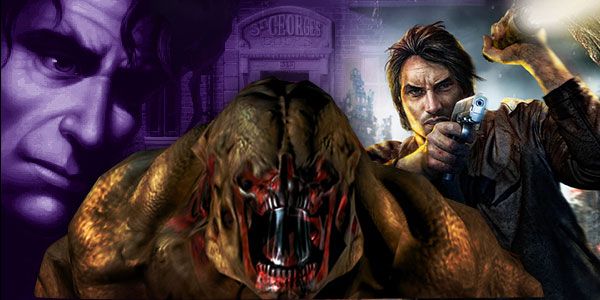
So we now have about a week and a half to go until Halloween, and if you’re a fan of horror games, chances are that you will be spending a lot of your time on the couch or at the computer, with the lights off and volume cranked up, playing some of your favorites.
Gamers have to be thankful for the fair amount of contributions to the horror genre available to them, but of course, like everything else, a few of those titles always manage to stand out from the rest due to their originality and innovation. Even those that are years — even decades — old still manage to just plain scare the living Hell out of us.
So, if you’re one of those longtime horror fans or if you’re looking to try your hand at the genre for the fist time, here’s a short list of 5 games that are most commonly considered among the best and why you should play them.
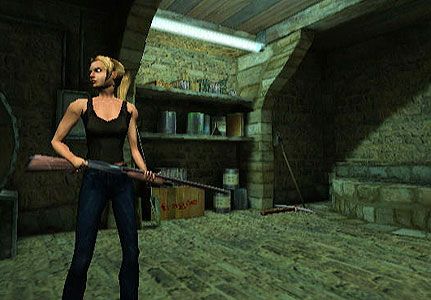
5. Eternal Darkness: Sanity’s Requiem
Released in 2002 for the Nintendo GameCube, Eternal Darkness puts the player in the role of Alexandra, who is investigating her grandfather’s murder in his Rhode Island mansion. Thanks to the mysterious “Tome of Eternal Darkness,” Alex and the player relive the horrifying experiences of different people from the past and discover a connection between them all.
The gameplay featured puzzles, an extensive magic system, and — it’s most memorable feature — the Sanity Effects. The Sanity Effect took the form of a meter that depleted when the player was put into scary and intense situations. If allowed to empty far enough, the player would begin to experience some disturbing phenomena, reflecting the character’s loosening grip on reality.
The way that the game antagonized players is perhaps the one thing that has stuck with us after all this time. Eternal Darkness breaks the fourth wall and does something truly terrifying … it fakes errors. Yes, the game will go out of its way to tell you that your memory card is corrupt, among other things.
Dear developers, take away all our health items, all of our ammo, and pit us against undefeatable enemies, but never, ever tell us that our memory card is corrupt! As gamers, this was one truly horrifying force to be reckoned with.

4. Fatal Frame 2: The Crimson Butterfly
Released in 2003 for the PlayStation 2, in 2004 for the Xbox, and again in June 2012 for the Wii, Fatal Frame 2 put the player in the role of Mio, accompanied by her physically disabled sister Mayu, who navigates a fog-enshrouded town that is abandoned and haunted by the ghosts of its former residents. While searching for an escape, the sisters begin to discover the town’s disturbing past.
The only weapon made available in this game is the “Camera Obscura,” an antique camera that can exorcise ghosts, which means that players had to take pictures of the ghosts in order to defeat them. Like many other video game weapons, players were able to customize the camera with different types of film (functioning as ammo) and modifications, giving the camera various effects and advantages in the game. Besides using the camera for combat, players looking for that perfect score could also take pictures of numerous non-hostile ghosts throughout their journeys for extra points.
One thing that added to the horror factor was the “Ghost Filament,” which appeared onscreen when looking through the camera lens. The Ghost Filament would change color depending on how close a hostile ghost was to the player, adding that extra layer of suspense.
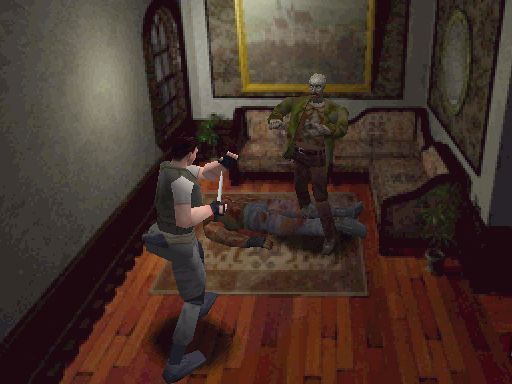
3. Resident Evil
Known as Biohazard in Japan, the original Resident Evil was released in 1996 for the PlayStation, Sega Saturn, and PC as well as on the PlayStation Network in 2009.
Resident Evil puts players in the role of either Chris Redfield or Jill Valentine, members of a search and rescue team investigating a mansion outside of Raccoon City. The team soon discovers that all is not well as they encounter various infected creatures and uncover a biological-weapon conspiracy.
Unique at the time of its release, Resident Evil placed its characters over prerendered backgrounds and used various fixed-camera angles, which added to the suspense. Also, giving the player a choice of characters gave the story multiple vantage points and outcomes, greatly increasing the game’s replay value.
Ammo and health items are purposley made scarce throughout the entire game, constantly leaving the player in fear for his character’s life. To make matters worse, players could only carry a limited amount of items.
Save points, taking the form of typewriters, required ink ribbons to use, which had to be acquired by the player. These ink ribbons were also limited in the amount that the player could carry. All of these things put together left us on the edge of our seats, anxious about what might be around the next corner.
One cannot forget that one moment early on in the story: walking down a long hall, not quite knowing what to expect yet, then wetting ourselves as a zombiefied dog burst through the window … good times.
Often credited as the originator of the survival-horror genre, the original Resident Evil still stands as a classic 16 years later, not only in the genre but for video games in general.
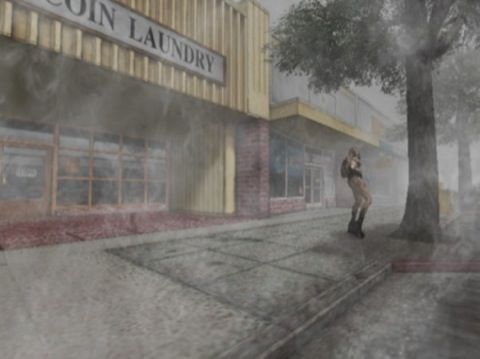
2. Silent Hill 2
Silent Hill 2 was released in 2001 for the PlayStation 2, rereleased as an extended version in 2002 for the Xbox, and rereleased again in HD in 2012 as part of the Silent Hill HD Collection for the Xbox 360 and PlayStation 3.
This second installment to the Silent Hill series puts the player in the role of James Sunderland, a widower who receives a letter from his deceased wife that claims that she is waiting for him in the town of Silent Hill. When James arrives there, he finds the place abandoned, enshrouded in fog, and infested by grotesque humanoid monsters.
The enviornment used thick layers of fog to obstruct the player’s view, leaving them only able to see a short distance in front of them. Like Resident Evil, Silent Hill 2 also used fixed-camera angles and had players fighting monsters and solving puzzles with a limited supply of ammo and health items.
The main character in this title was an everyman with no combat training of any sort — something SIlent Hill 2 did in contrast to its survival-horror competitor, Resident Evil. As a result, the player was given the impression that the character’s situation was ever more dire and dangerous than someone who could easily mow down enemies with high-powered weapons.
Our protagonist is given a flashlight to navigate the dark areas of the town; although, it only illuminates a short distance. We are also presented with a radio that would emit static whenever monsters were nearby. These elements added a hightened sense of fear due to a sort of "lack of knowledge" — not quite knowing what lies ahead.
Critics and gamers alike highly praised the psychological aspect of the game. Instead of using music queues, jump scares, and action-based gameplay, the horror of Silent Hill 2 was almost entirely psychological in the way that it utilized disturbing ambient noise, monsters that were symbolic of the character’s subconscious, and an overall unsettling atmosphere that stuck with the player long after the credits had rolled. The narrative also earned honorable mention for its engaging story and twist ending.
Silent Hill 2 sparked a huge cult following for the series and is widely considered to be the best installment as well as one of the greatest games of all time.
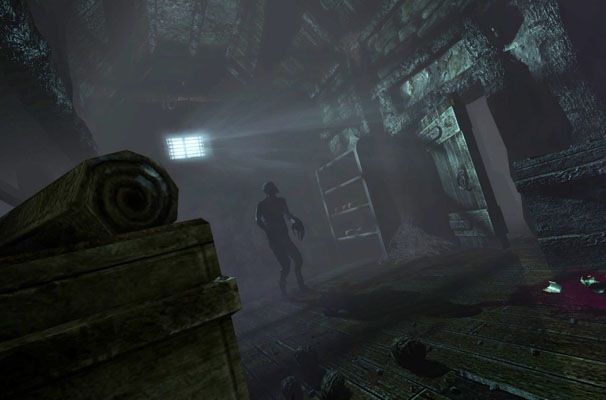
1. Amnesia: The Dark Descent
The most recent entry to the horror genre, Amnesia: The Dark Descent was released for PC and Mac in 2010.
Amnesia takes place in 19th century England and puts the player in the role of Daniel, who awakens in a dark castle with no memory of his past. He soon finds a note written by himself to himself that reveals that he must kill the Baron Alexander. During his quest through the Baron’s dark castle, Daniel fights off various creatures and a malevolent force known as “The Corruption” while progressively uncovering more and more about his own past.
Amnesia differs from the other titles mentioned above in the way that it focuses on puzzles and exploration — the most unique feature being that the player cannot fight. That’s right — the only thing we can do to stay alive is sneak past these creatures and, if required, run for our dear lives and hide. This gives the player a true feeling of helplessness from start to finish.
Like Eternal Darkness, Amnesia also features a sanity meter, which will deplete the more Daniel is put into tense situations — and the game often puts the player between a rock and a hard place.
For example, coming into contact with one of the game’s monsters will surely lead to Daniel’s death, so hiding in the shadows is a logical solution. However, remaining in darkness too long will empty the sanity meter, and in order to restore it, the player must step into the light … where the monster is waiting.
Moments like these, along with the game’s chilling atmosphere and superb sound design, make Amnesia one of the most horrifying games of all time.
Gamers and critics alike consider Amnesia: The Dark Descent to be one of (if not the single) greatest horror epics of this generation. While the title is still fairly young in the gaming universe, it has already built a legacy that is sure to last for generations to come.
So there you have it. 5 horror games widely considered to be the best in the genre, perfectly ideal for the creepiest holiday in history. Whether you’re a horror enthusiast or just looking for a few good games to play, these 5 horror classics should not be missed by anyone.
On top of all that, here are a few tips that may help you improve your horror gaming experience:
- Play with the lights off: Anyone familiar with horror movies would find this obvious. For games, the effect is pretty much the same. Horror games were meant to be played in the dark, and doing so greatly improves the atmosphere and overall vibe of any title in the genre.
- Use headphones: If you can, use headphones while playing. Many horror games use sound to build an unsettling atmosphere for the player. Using headphones will rule out any distractions and make the player feel more immersed.
- Know when to fight: Many horror games make it so fighting is only optional. Sometimes you may want to empty the cartridge on a straggling zombie minding his business, but remember that a lot of time, ammo and supplies are in short supply; therefore, it may be a better idea to sneak by or make a run for it. On the other hand, do not bother trying to run away while facing an enemy in a tight hallway, this is one of the times when it’s OK to bash that zombie’s brains in.
- Save often: Alas, most horror games have limited systems for the player to record his progress. Save points are often few and far between, so be sure to never pass up an opportunity to save … or risk losing about 10 to 20 minutes of progress upon dying. Even if you happen to pass a save point a second time, say while backtracking, save again! Always save when you are given the opportunity.
As always, lists of this nature are subject to debate, so feel free to disagree and maybe share your opinion. Also, if you’re interested in reading more about horror games, check out these three lists of recommendations.
